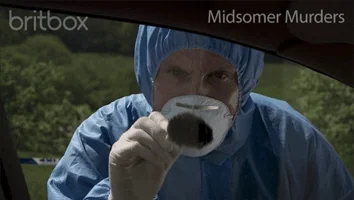Crime Scene Cleanup, Veterinary Forensics
among topics of URI’s spring Forensic Science Seminar Series
By Ian Weiner
 The use of civil litigation
in forensic science cases across the nation, how to appropriately and
effectively clean up a crime scene, and an extensive look into Frances Glessner
Lee’s recreations of crime scenes in dollhouses that were then used to train
homicide investigators are among the topics that will be explored during the
University’s spring Forensic Science Seminar Series.
The use of civil litigation
in forensic science cases across the nation, how to appropriately and
effectively clean up a crime scene, and an extensive look into Frances Glessner
Lee’s recreations of crime scenes in dollhouses that were then used to train
homicide investigators are among the topics that will be explored during the
University’s spring Forensic Science Seminar Series.
The series brings leading figures in several forensic
science specialties to URI, and is free and open to the public.
“There is a great deal of interest in forensic science and the forensic science program seminar series provides a platform at the University to bring in speakers that will present on topics in the news and of concern to the students and to the general public,” said Dennis Hilliard, director of the Rhode Island State Crime Laboratory at the University of Rhode Island and adjunct professor of biomedical sciences in the College of Pharmacy.
“The significant topics of interest during the spring 2020 semester include Genetic Genealogy, used extensively in solving cold cases, and Rapid DNA Analysis, which will allow law enforcement to connect suspects to crime scenes quickly.”
The lectures will be held on Fridays from 3:30 to 5 p.m. in
Room 105 of the Richard E. Beaupre Center for Chemical and Forensic Sciences,
140 Flagg Road, Kingston campus.
The series speakers and their topics are as follows:
Jan. 31, Mike Holleran, a 31-year veteran of the
Massachusetts State Police, “Crime Scene Cleanup”
Feb. 7, Steve Quartino, retired U.S. treasury agent and
president of Discreet Investigative Solutions, “U.S. Treasury Law Enforcement-
Pre and Post 9-11”
Feb. 14, Jessi Brown, forensic scientist at the ANDE Corp.,
the first and only company to receive National DNA Index System approval from
the FBI, “Rapid DNA Analysis”
Feb. 21, Wayne Miller, a retired agent from the U.S. Bureau
of Alcohol, Tobacco, Firearms and Explosives, “Fire and Explosion Scene
Forensics”
Feb. 28, Thomas Blackwell, director of the U.S. Drug
Enforcement Agency’s Northeast lab, “You found drugs in that?”
March 6, Martha Smith-Blackmore, president and director of
Forensic Veterinary Investigations, “Veterinary Forensics”
March 20, Ray Wickenheiser, a New York state trooper,
“Investigative Genetic Genealogy”
March 27, Kirk Yeager, a member of the Federal Bureau of
Investigation explosives unit, “Explosives and Terrorism”
April 3, George Handel, from the Center for Disaster and
Human Assistance Medicine, “Traumatic Injuries”
April 10, Andrew Reitnauer, of Delta Forensics with 14-years
of experience as a latent print examiner and senior crime scene responder,
“Latent Fingerprint”
April 17, Eva Marie Mancuso, managing partner at Hamel,
Waxler, Allen and Collins, “Civil Litigation”
April 24, Bruce Goldfarb, executive assistant in the
Maryland office of the Chief Medical Examiner, “Frances Glessner Lee –
Unexplained Deaths”